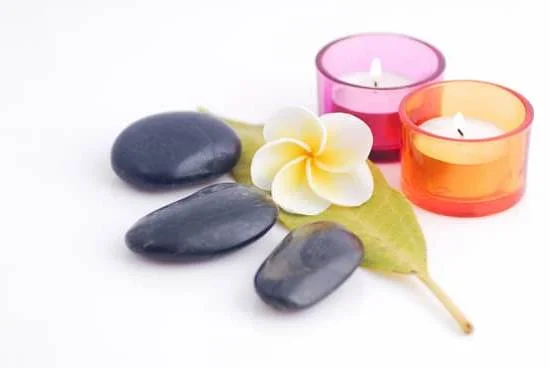Are you wondering, “does aromatherapy work for headaches“? Aromatherapy is a holistic treatment that uses natural plant extracts to promote health and well-being. In this article, we explore the potential of aromatherapy in providing relief for headaches. Whether you suffer from tension headaches, migraines, or cluster headaches, aromatherapy may offer a natural alternative or complementary approach to managing your symptoms.
Aromatherapy has been used for centuries as a traditional practice in various cultures around the world. It involves the use of essential oils extracted from plants to improve physical, emotional, and mental health. These potent oils can be used in a variety of ways, including inhalation, topical application, and diffusion. Many people have turned to aromatherapy as a natural remedy for various ailments, including headaches.
In this article, we will delve into the science behind how aromatherapy works and its effects on the body. We will also discuss the different types of headaches and their triggers before exploring how specific essential oils may benefit headache sufferers.
Furthermore, we will examine research studies that have been conducted on the efficacy of aromatherapy for headaches and provide tips on using this holistic treatment safely and effectively. If you are curious about incorporating aromatherapy into your headache management routine, read on to learn more about this ancient practice’s potential benefits.
Understanding Headaches
Types of Headaches
There are several types of headaches, each with its own set of symptoms and triggers. The most common types include tension headaches, migraines, and cluster headaches. Tension headaches are often caused by stress or anxiety and result in a constant dull ache on both sides of the head.
Migraines are characterized by severe throbbing pain, nausea, and sensitivity to light or sound. Cluster headaches are less common but more severe, causing intense pain around one eye or one side of the head.
Common Triggers for Headaches
Headaches can be triggered by a variety of factors including stress, lack of sleep, dehydration, hormonal changes, certain foods or additives, environmental factors like strong odors or smoke, and even medication overuse. Identifying these triggers is crucial in managing and preventing headaches.
The Importance of Understanding Headaches
Understanding the different types of headaches and their triggers is essential when considering alternative treatments like aromatherapy. By knowing what type of headache you are experiencing and what triggers it, you can choose the right essential oils and methods to effectively alleviate your symptoms. This knowledge also allows individuals to take proactive steps in avoiding triggers that lead to frequent headaches.
By understanding the types and triggers of headaches, individuals can make informed choices on how to use aromatherapy as a complementary treatment for headache relief. It’s important to recognize that not all headaches are the same and that identifying the specific type is crucial in finding effective relief through aromatherapy or other natural remedies.
The Science Behind Aromatherapy and Its Effects on the Body
Aromatherapy has been used for centuries as a natural remedy for various ailments, including headaches. The practice involves using essential oils extracted from plants to promote physical and psychological well-being. When it comes to the science behind aromatherapy, there is evidence to suggest that the inhalation of certain essential oils can have an impact on the body.
When inhaled, the molecules in essential oils can stimulate olfactory receptors in the nose, which then send signals to the brain’s limbic system. This part of the brain is involved in regulating emotions, behavior, sense of smell, and long-term memory. It also plays a role in controlling certain autonomic functions such as heart rate, blood pressure, and breathing. As a result, the aroma of certain essential oils can have a calming or invigorating effect on the body.
In addition to their effects on the limbic system, some essential oils also have chemical properties that can directly affect the body when they are absorbed through the skin. For example, peppermint oil contains menthol, which has a cooling effect when applied topically. These physiological responses help shed light on how aromatherapy may work for headaches – by targeting both the psychological and physiological aspects of this common ailment.
| How Aromatherapy Works | Effects on the Body |
|---|---|
| Aromatherapy stimulates olfactory receptors in the nose | Can have a calming or invigorating effect on the body |
| Certain essential oils have chemical properties that affect the body when absorbed through the skin | For example: peppermint oil contains menthol with a cooling effect |
Benefits of Aromatherapy for Headaches
Aromatherapy has been used for centuries as a natural remedy for various ailments, including headaches. The use of essential oils in aromatherapy is thought to promote relaxation, relieve stress, and alleviate pain. When it comes to headaches, aromatherapy can offer several benefits that contribute to its effectiveness in providing relief.
One of the key benefits of aromatherapy for headaches is its ability to reduce stress and tension. Many headaches are triggered or exacerbated by stress, anxiety, and muscle tension. Certain essential oils, such as lavender, chamomile, and peppermint, have calming properties that can help relax the mind and body, alleviating the symptoms of a headache.
In addition to promoting relaxation, aromatherapy can also help improve mood and mental well-being. Headaches often take a toll on an individual’s overall sense of well-being, causing irritability and fatigue. Aromatherapy can be uplifting and energizing, offering a natural way to combat these negative feelings associated with headaches.
Moreover, aromatherapy offers a natural alternative to over-the-counter medications for those looking to avoid potential side effects or dependencies. Many people prefer the idea of using natural remedies for their health concerns whenever possible. Aromatherapy provides a holistic approach to managing headaches without the need for pharmaceutical interventions.
| Benefits of Aromatherapy for Headaches | Data |
|---|---|
| Promotes relaxation and reduces stress | Aromatherapy helps calm the mind and body through the use of calming essential oils such as lavender and chamomile. |
| Improves mood and mental well-being | The uplifting properties of certain essential oils in aromatherapy can help combat irritability and fatigue associated with headaches. |
| Natural alternative to medication | Aromatherapy offers a holistic approach to managing headaches without the potential side effects or dependencies of pharmaceutical interventions. |
Essential Oils for Headaches
When it comes to using aromatherapy for headaches, not all essential oils are created equal. Some essential oils have been found to be particularly effective in alleviating headache symptoms, thanks to their unique properties and characteristics. Here are some of the best essential oils for treating headaches:
- Lavender Oil: Known for its calming and soothing properties, lavender oil has been shown to reduce the severity of migraine headaches and promote relaxation.
- Peppermint Oil: With its cooling and numbing effect, peppermint oil can help ease tension headaches and improve blood circulation.
- Eucalyptus Oil: This refreshing and invigorating oil is often used to relieve sinus pressure and congestion-related headaches.
- Rosemary Oil: Known for its analgesic properties, rosemary oil can help alleviate symptoms of tension headaches and migraine attacks.
In addition to these essential oils, chamomile, ginger, and basil oils have also been found to be effective in providing relief from headache symptoms. It’s important to note that individual responses to essential oils may vary, so it may require some trial and error to find the best option for you.
When using essential oils for headaches, it’s crucial to ensure their purity and quality. Look for organic or therapeutic-grade oils from reputable sources to maximize their effectiveness.
How to Use Aromatherapy for Headaches: Inhalation, Topical Application, and Diffusers
Using aromatherapy for headaches can be done through various methods such as inhalation, topical application, or by using diffusers. Each method provides different benefits when it comes to alleviating headache symptoms.
- Inhalation: Inhaling the aroma of essential oils can provide quick relief from headache symptoms. Simply add a few drops of your chosen essential oil onto a tissue or cotton ball and inhale deeply. Alternatively, you can add a few drops of oil into a bowl of hot water and inhale the steam.
- Topical Application: Massaging diluted essential oils onto your temples or neck area can help reduce headache pain. Be sure to mix the essential oil with a carrier oil such as coconut or almond oil before applying it onto your skin.
- Diffusers: Using an aromatherapy diffuser can disperse the scent of essential oils throughout your living space, creating a calming environment that may help ease headache discomfort.
Experiment with these different methods to find out which works best for you in relieving your specific type of headaches. It’s important to always follow proper dilution guidelines when using essential oils topically, as they are highly concentrated substances that should be handled with care.
Research on the efficacy of aromatherapy for headaches continues to grow as more studies delve into this natural approach for pain relief. Incorporating aromatherapy into your self-care routine may provide an alternative or complementary option for managing headaches without relying solely on medication.
How to Use Aromatherapy for Headaches
Inhalation
Inhalation is one of the most common and effective ways to use aromatherapy for headaches. When inhaling essential oils, the molecules enter the nasal cavity and stimulate the olfactory nerves, which then send signals to the brain. This can help reduce headache symptoms and promote relaxation. There are a few methods for inhalation, including using a diffuser, placing a few drops of essential oil on a tissue or cotton ball, or adding oils to hot water for steam inhalation.
Topical Application
Topical application involves applying diluted essential oils directly to the skin, usually in areas around the head and neck where tension is commonly felt during headaches. It’s important to dilute essential oils with a carrier oil before applying them to the skin to avoid irritation. Common carrier oils include coconut oil, almond oil, or jojoba oil. Popular areas for topical application include the temples, forehead, neck, and shoulders.
Diffusers
Diffusers are devices that disperse essential oils into the air as fine mist particles. This method is particularly convenient because it allows you to experience the benefits of aromatherapy throughout a room or space over an extended period of time. There are several types of diffusers available, including ultrasonic diffusers, nebulizing diffusers, heat diffusers, and evaporative diffusers. Each type of diffuser has its own unique way of dispersing essential oils and may be suitable for different preferences and needs.
It is evident that inhalation, topical application, and diffusers are effective methods for using aromatherapy to alleviate headache symptoms. With proper use and caution towards safety measures such as choosing quality oils and adequate dilution, aromatherapy can serve as an accessible tool for managing headaches without relying solely on pharmaceutical solutions.
Research and Studies on the Efficacy of Aromatherapy for Headaches
Aromatherapy has been used for centuries as a natural remedy for various ailments, including headaches. But does aromatherapy work for headaches? Many scientific studies have been conducted to explore the effectiveness of aromatherapy in relieving headache symptoms.
Research has shown that certain essential oils used in aromatherapy can indeed provide relief from headaches. A study published in the European Journal of Neurology found that inhaling lavender essential oil for 15 minutes could significantly reduce the severity of migraine headaches. Another study in the International Journal of Neuroscience demonstrated that peppermint oil applied topically to the forehead and temples was effective in alleviating tension headaches.
In addition to these specific studies, there is a growing body of research that supports the use of aromatherapy for headache relief. Aromatherapy works by stimulating the olfactory system, which then sends signals to the brain, triggering a release of neurotransmitters such as serotonin and endorphins. These neurotransmitters help to alleviate pain and promote relaxation, which can be especially beneficial for headache sufferers.
When considering whether aromatherapy works for headaches, it is important to take into account the existing research and studies that support its efficacy. Incorporating aromatherapy into your headache management plan may provide a natural and holistic approach to relieving symptoms and improving overall well-being.
- Benefits of using aromatherapy for headache relief
- Efficacy of specific essential oils for different types of headaches
- How inhaling essential oils triggers physiological responses in the body
Tips for Using Aromatherapy Safely and Effectively for Headaches
In conclusion, the question “Does aromatherapy work for headaches?” has been answered with a resounding yes. Aromatherapy has shown to be an effective and natural way to alleviate headache symptoms and promote overall well-being. With the understanding of different types and triggers of headaches, as well as the science behind the effects of aromatherapy on the body, it is clear that this alternative treatment can provide significant benefits for headache relief.
Furthermore, utilizing essential oils such as peppermint, lavender, and eucalyptus can offer effective results in managing headache symptoms. The use of these oils through inhalation, topical application, or diffusers allows for flexibility in how individuals can integrate aromatherapy into their daily routine to combat headaches. Additionally, research and studies have consistently supported the efficacy of aromatherapy for headache relief, further solidifying its place as a viable treatment option.
To ensure safe and effective use of aromatherapy for headaches, it is important to follow tips such as using high-quality essential oils, diluting them properly when applying topically, and consulting with a healthcare professional if necessary. By incorporating these considerations into your aromatherapy practice, you can maximize its benefits while minimizing potential risks. Overall, with proper understanding and application, aromatherapy proves to be a valuable tool in managing and alleviating headaches naturally.
Frequently Asked Questions
Can Aromatherapy Help Headaches?
Aromatherapy has been found to be beneficial in helping to alleviate headaches for some people. Certain essential oils, when used in aromatherapy, can help reduce the intensity and frequency of headaches.
What Essential Oils Combinations Help Headaches?
Some essential oil combinations that have been reported to help with headaches include peppermint and lavender, eucalyptus and rosemary, or chamomile and frankincense. These combinations can be diffused or applied topically for relief.
Is Lavender or Peppermint Oil Better for Headaches?
Both lavender and peppermint essential oils have been known to provide relief for headaches, but they work in different ways. Lavender has calming and soothing properties that can help ease tension headaches, while peppermint has a cooling effect that can help with migraines and tension headaches as well.
Ultimately, the choice between the two may depend on personal preference and the specific type of headache being treated.

Are you looking for a natural way to improve your health and wellbeing?
If so, aromatherapy may be the answer for you.





